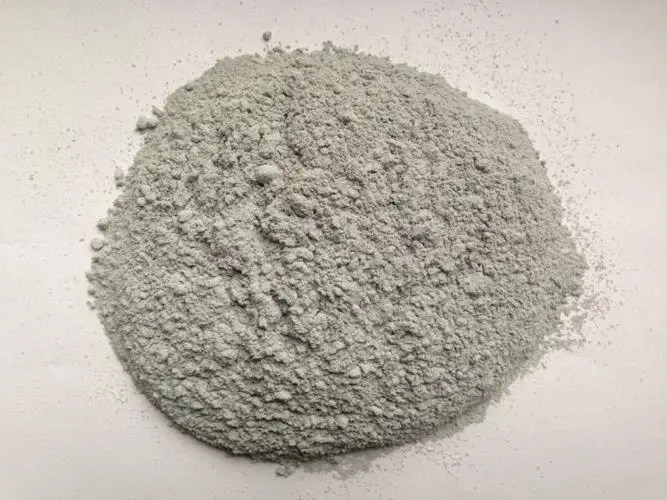
high alumina cement use
High Alumina Cement Applications and Benefits
High Alumina Cement (HAC) is a specialized type of cement that has garnered attention in the construction and engineering sectors due to its unique properties and performance characteristics. Comprised mainly of calcium aluminate compounds, HAC stands out from conventional cement because of its high alumina content, which typically exceeds 30%. This article explores the applications, advantages, and considerations of using high alumina cement in various projects.
Applications of High Alumina Cement
High Alumina Cement is extensively used in situations where rapid strength development and resistance to aggressive environments are critical
. The following applications highlight its versatility1. Marine and Coastal Structures Due to its remarkable resistance to seawater and sulfate attacks, HAC is often the material of choice for marine constructions such as docks, piers, and offshore platforms. Its exceptional durability ensures that these structures withstand harsh environments, enhancing their lifespan.
2. Refractory Applications High alumina cement is ideal for refractory products, which must endure high temperatures and abrasive environments. In the manufacturing of kilns, furnaces, and incinerators, HAC provides the temperature resistance and mechanical strength necessary for optimal performance.
3. Rapid Repair Works The quick setting and high early strength of HAC make it suitable for rapid repair and rehabilitation works in infrastructure. In situations where downtime is costly, such as road repairs or airport runways, HAC can significantly reduce the time required for repairs, allowing for a quicker return to service.
4. Industrial Floors In industrial settings where heavy machinery and heavy-duty operations are common, HAC is used for flooring applications. Its strength and resistance to chemical spills and abrasion make it a preferred choice for factories, warehouses, and power plants.
5. High-Temperature Environments HAC is also employed in applications that involve exposure to high temperatures, such as in power plants and petrochemical facilities. Its stability under heat ensures that structures and components maintain integrity over extended periods.
high alumina cement use

Benefits of High Alumina Cement
The use of High Alumina Cement presents several advantages compared to traditional Portland cement
1. Rapid Strength Gain One of the most significant benefits of HAC is its ability to achieve high strength within a short period. This rapid strength gain is advantageous in time-sensitive construction projects, where delays can lead to increased costs and logistical complications.
2. Superior Resistance to Chemicals High Alumina Cement exhibits excellent resistance to various aggressive chemicals, including sulfates, chlorides, and acids. This chemical resilience makes it particularly valuable in settings exposed to harsh environmental conditions, thus prolonging the service life of structures.
3. Lower Shrinkage Rates HAC often experiences lower shrinkage compared to traditional cements. This property helps in reducing the risk of cracking in concrete applications, leading to enhanced durability and maintenance-free performance over time.
4. Versatility in Mix Design The unique chemistry of HAC allows it to be blended with various additives and aggregates to tailor its properties for specific applications. This versatility makes it suitable for an array of construction scenarios, from unique architectural designs to robust industrial applications.
Considerations and Challenges
Despite its advantages, there are a few considerations when using High Alumina Cement. Its cost can be higher than that of ordinary Portland cement, which may pose budget challenges for some projects. Furthermore, the workability and mixing requirements can also differ from standard cement, necessitating careful attention to the mix design and application procedures.
In conclusion, High Alumina Cement is a highly effective material that meets specific engineering demands, particularly in environments requiring rapid strength, chemical resistance, and durability. As construction practices evolve, the applications and benefits of HAC will continue to be recognized, paving the way for its increased use in challenging construction scenarios across a range of industries.
Share
-
Natural Premium Bentonite Cat Litter - Superior ClumpingNewsJul.31,2025
-
Premium Resin Coated Sand - High Heat Resistance CastingNewsJul.31,2025
-
High Quality Silicon Carbide Grit for Abrasive ApplicationsNewsJul.30,2025
-
High-Quality Ceramsite for Plants & Gardening | Lightweight PebblesNewsJul.29,2025
-
Premium Burgundy Glass Marbles for Vases & Shooter GamesNewsJul.29,2025
-
High Purity Quartz Sand for Industrial and Ground ApplicationsNewsJul.29,2025






